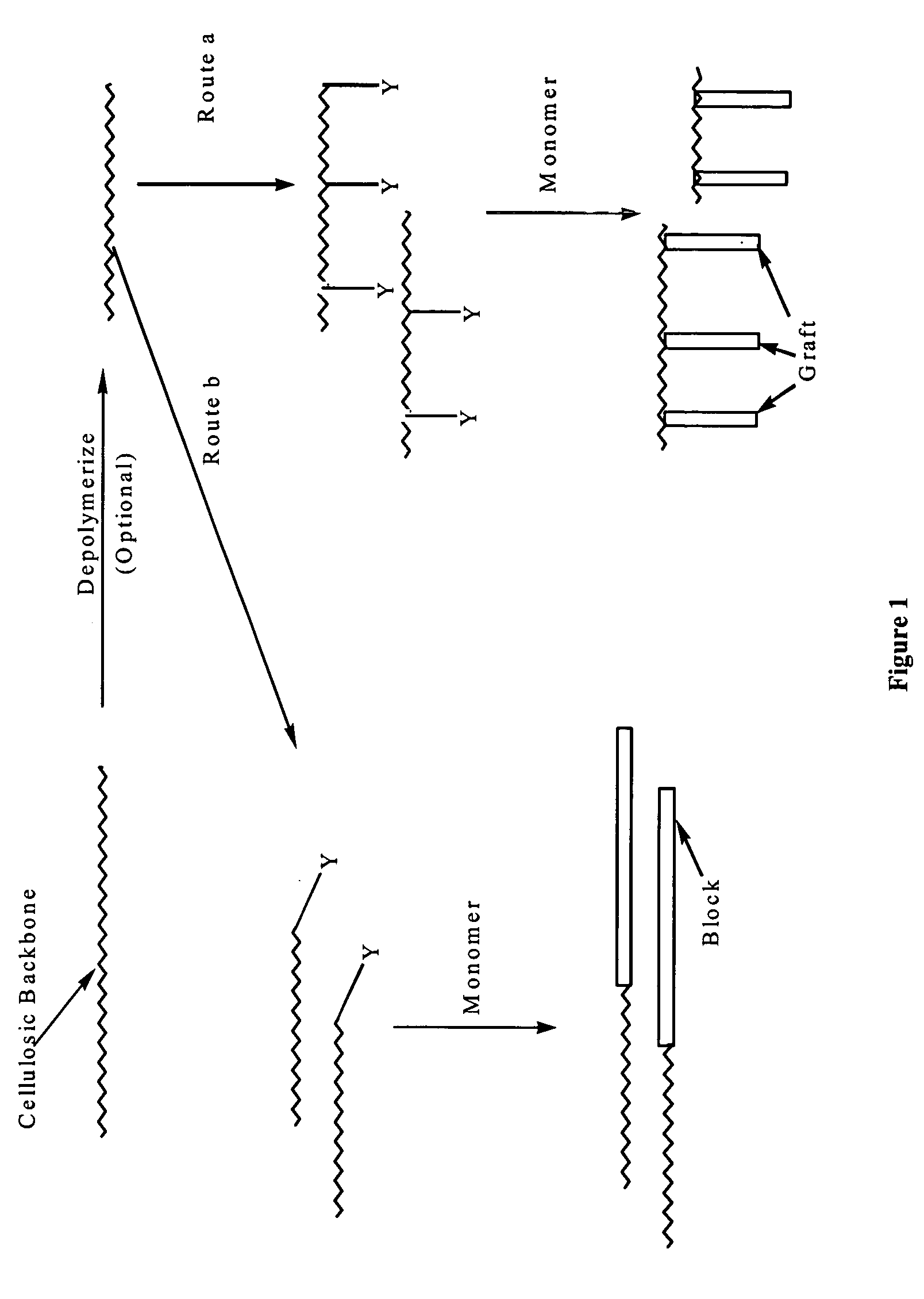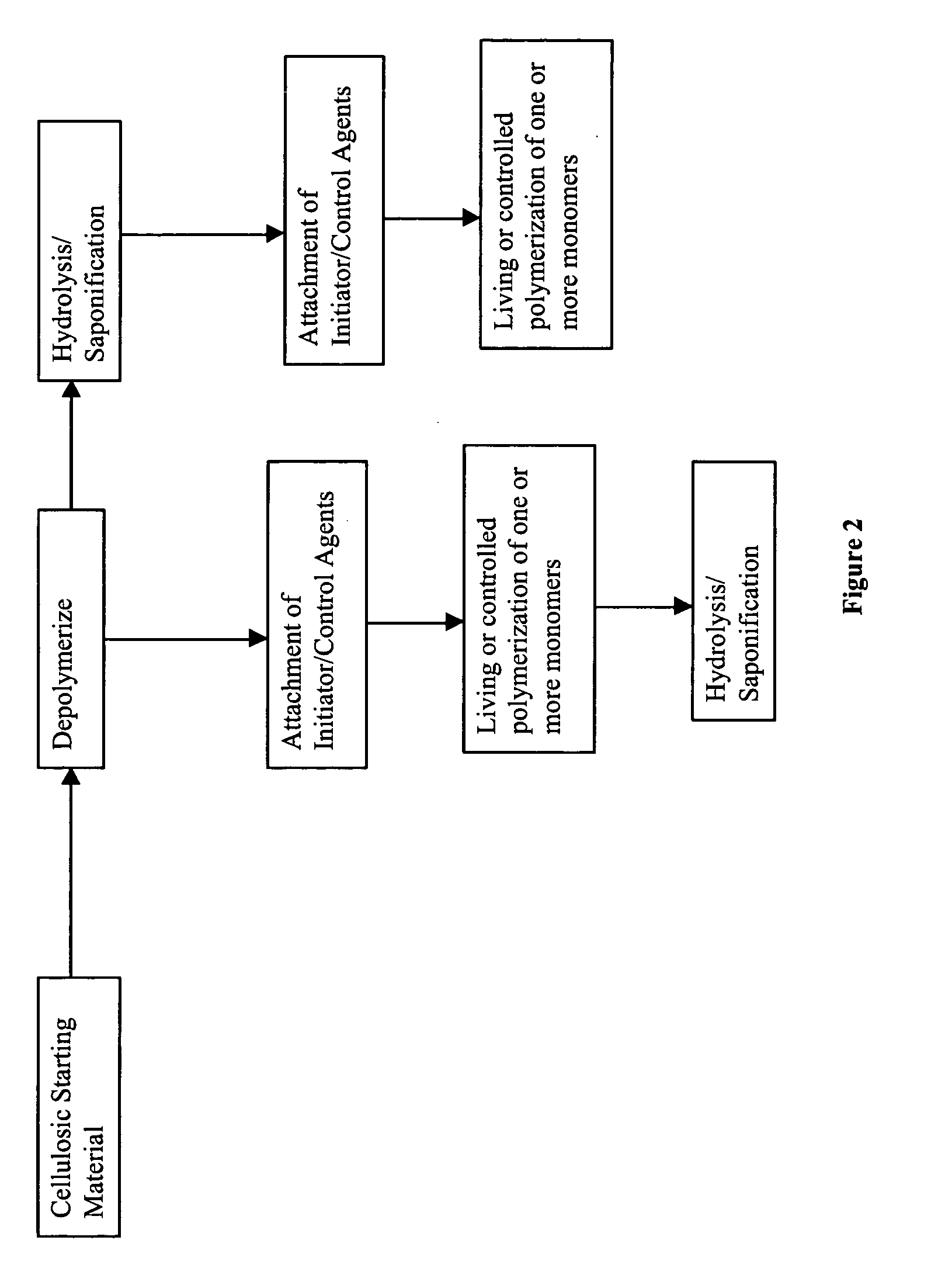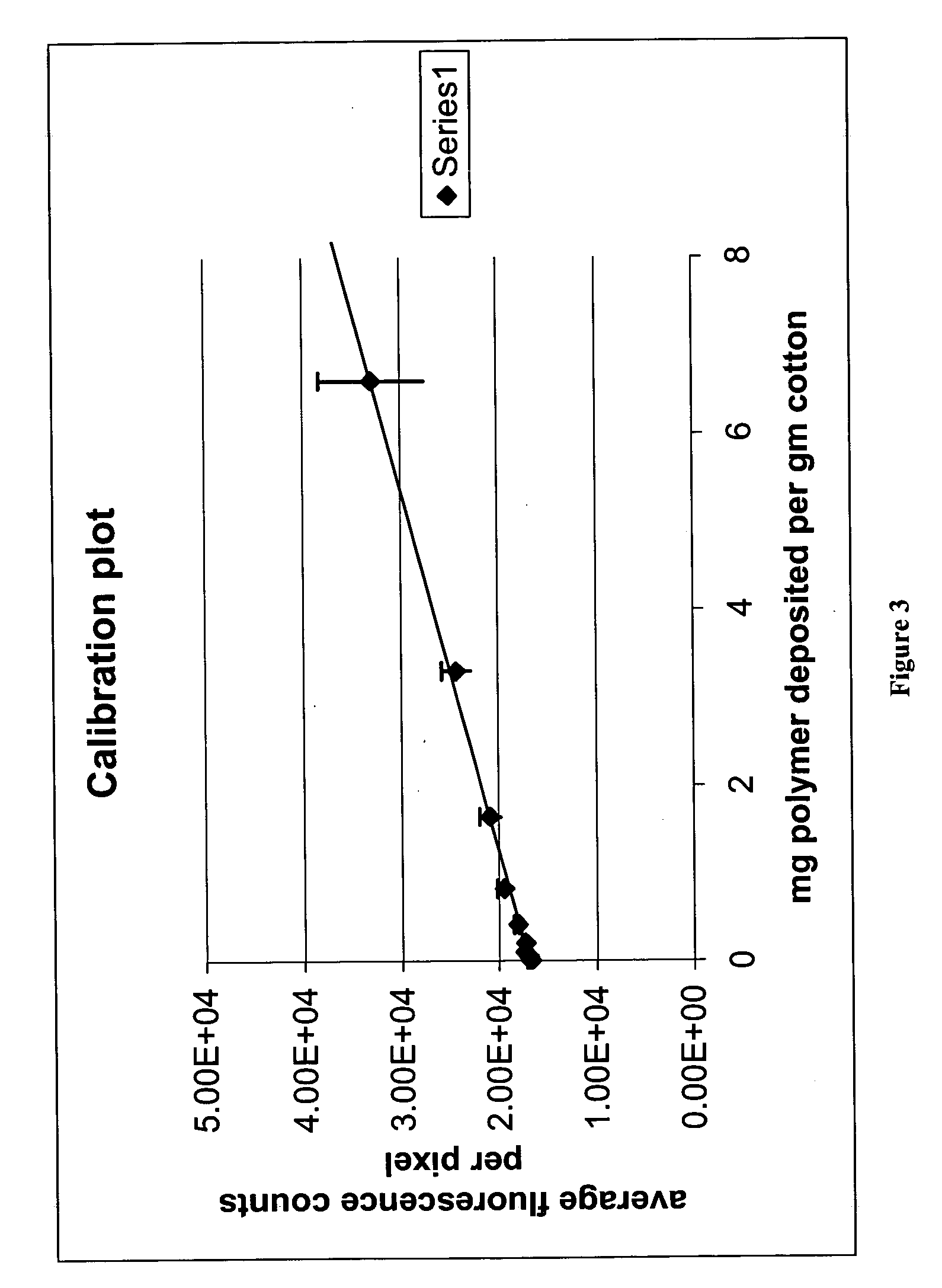Cellulose copolymers that modify fibers and surfaces and methods of making same
- Summary
- Abstract
- Description
- Claims
- Application Information
AI Technical Summary
Benefits of technology
Problems solved by technology
Method used
Image
Examples
example 1
Preparation of Grafted Polymers
Parts A-C of this example proceeds substantially according to the following scheme 6:
Part A: Synthesis of the Control Agent:
2-Bromopropionyl bromide 1 reacted with N-silyl protected ethanolamine to form the corresponding amide. Subsequently deprotection of silyl group occurred in acidic medium during the workup to give the N-hydroxyethyl 2-bromoacrylamide 2 in a quantitative yield. With no further purification, compound 2 was coupled with sodium dithiocarbamate to yield a yellow solid (“Control agent”) compound 3 in 75% yield. All compounds were characterized by 1H NMR.
Part B: Depolymerization of the Cellulosic Backbone
50 g of cellulose triacetate (“CTA”) (purchased from Aldrich, with a degree of substitution of about 2.7) was dissolved in 1000 ml of dichloroethane (purchased from Aldrich and used without any further purification) under inert atmosphere and heated to 70° C. with vigorous stirring. To this solution 0.5 ml of BF3.Et20 was adde...
example 2
Demonstration of Adsorption to Cotton and Effect of Architecture on the Adsorbed Amount
Eight samples of polydimethylacrylamide grafted on cellulose monoacetate (CMA) were prepared substantially according to the methods of Example 1. In this example, the control agent was one where “Z” was pyrrole (see scheme 6, above). The number of grafts and length were varied. A small amount of a fluorescent monomer, having the structure:
was incorporated in the grafts during polymerization of the dimethylacrylamide monomer. The following conditions were employed: Molecular weight of CMA (Mn) 20,000 (rough approximation) DS of control agent 0.075 and 0.15 onto the CMA CMA:Monomer weight ratio varies from 1:2 to 1:16 Amount of fluorescent monomer: 0.75 mg in each sample Total amount of polymer: 150.75 mg Total solids concentration: 33.33% Amount of AIBN: 10 mole % compared to control agent. Reaction temperature: 60° C. Reaction time: 18 hrs
Table 2 shows the amounts used in the polym...
example 3
Effect of Graft Architecture on the Adsorbed Amount
A variety of different polymers were grafted from cellulose monoacetate (CMA), with different degrees of substitution of the grafts and different degrees of polymerization of the grafts. The monomers used for the grafts were dimethylacrylamide (DMA), trishydroxymethylmethylacrylamide (THMMA), Acrylamide methylpropane sulphonic acid triethylamine salt (AMPS:Et3N) and N-carboxymethyl dimethylaminopropyl acrylamide (N-carbDMAPA). The graft chains were present in seven different degrees of substitution across the bulk sample, namely DS of 0.012, 0.023, 0.04, 0.072, 0.125, 0.18 and 0.27. For each of the first 4 degrees of substitution, five graft polymers were prepared with different degrees of polymerization (DP) of the grafts, with DP's of 25, 50, 100, 200 and 400 being targeted. For each of the last 3 degrees of substitution, four graft polymers were prepared with different degrees of polymerization of the grafts, with DP's of 25, 5...
PUM
| Property | Measurement | Unit |
|---|---|---|
| Mass | aaaaa | aaaaa |
Abstract
Description
Claims
Application Information
 Login to View More
Login to View More - R&D
- Intellectual Property
- Life Sciences
- Materials
- Tech Scout
- Unparalleled Data Quality
- Higher Quality Content
- 60% Fewer Hallucinations
Browse by: Latest US Patents, China's latest patents, Technical Efficacy Thesaurus, Application Domain, Technology Topic, Popular Technical Reports.
© 2025 PatSnap. All rights reserved.Legal|Privacy policy|Modern Slavery Act Transparency Statement|Sitemap|About US| Contact US: help@patsnap.com



